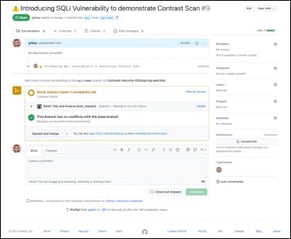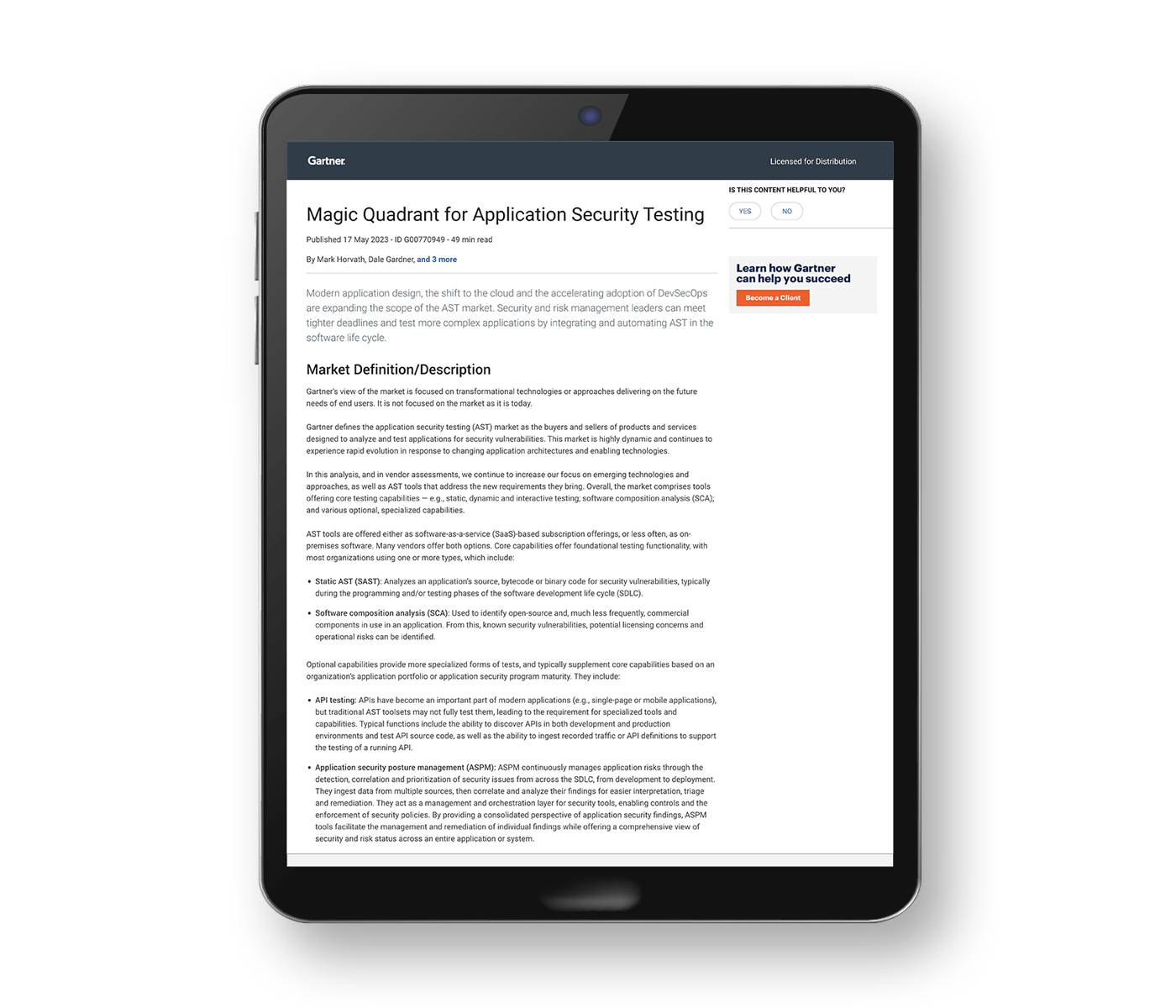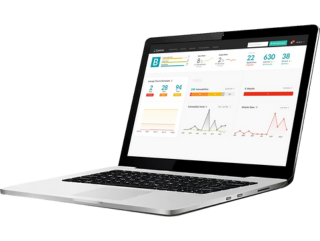Dynamic Application Security Testing (DAST)
Learn more about DAST tools for security testing
Start the AST SandboxOrganizations across all industries are transforming digitally to keep up with the competition. Modern software development that fuses velocity and agility allows for faster release cycles — helping organizations deploy in days instead of weeks. A critical part of shifting to sophisticated application infrastructures is application security — enabling organizations to detect and remediate vulnerabilities in development and testing and protect them in production from threats such as sensitive data exposure.
But as development teams have embraced DevOps and Agile practices, application security testing (AST) has not evolved to meet the new speed and flexibility requirements of modern software. One of the AST tools organizations use is dynamic application security testing (DAST).
What is DAST?
Dynamic application security testing or DAST is a vulnerability assessment tool used to find application vulnerabilities in production. The word "dynamic" in its name is due to application security testing usually being performed in a dynamic environment.
Developers use DAST vulnerability scanning to monitor an application’s behavior and observe its reaction to staged attacks. These staged attacks are developed and configured without any knowledge of the application’s architecture or internal source code, attempting to take on a hacker’s approach to exploit an application vulnerability.
DAST is not the only tool used in AST. It is most often combined with other tests that look for vulnerabilities at different stages in the software development life cycle (SDLC).
Contrast Security offers significant advantages over DAST. Unlike DAST, which scans applications from the outside, Contrast Security integrates directly into the application, providing real-time vulnerability detection. It delivers faster, more accurate results with fewer false positives, continuous monitoring and deeper visibility into runtime threats and security risks.
How does DAST work?
DAST works by simulating automated attacks on an application to trigger unexpected results. The development and configuration of DAST tools require highly skilled security experts with in-depth knowledge of application security testing, web and application servers, databases, access control lists and much more. DAST targets applications from the outside using attacks like brute-force attacks, cross-site scripting (XSS) attacks and SQL injection attacks. Because the application is targeted externally, DAST tools have no access to an application’s source code and thus are often accompanied by other tools for more effective methods of application vulnerability management.
SAST vs. DAST: DAST in combination with SAST
Static application security testing (SAST) is often used in combination with DAST for a look at the application from the inside out. When developers prepare and run SAST scans, they do so with the knowledge of source code and binaries. What SAST scanning does is essentially scan code line by line searching for issues. One advantage of SAST tools is that it helps developers identify the exact locations of code that is vulnerable to an application attack. Another is that it gives developers a chance to test code before the application is in running state.
SAST tools and technologies analyze the source code, leading developers directly to issues. It is also much more cost-effective to procure than other AST solutions.
DAST extends application security further into the SDLC, taking place in the production phase. DAST scans use a library of potential attacks to test potential application weaknesses through staged application attacks. Developers and security teams use these legacy application security tools along with penetration testing as part of their vulnerability management plan, relying on the insights of one to make up for the limitations of the other.
Limitations with DAST and legacy application management methods
As mentioned above, DAST is often used in combination with other application security testing tools, as it is unable to provide an overall look at an application’s health and behavior. Stacking up tools at different points in the SDLC complicates things, taking a team of highly skilled experts to oversee testing and propose solutions. As application development moves to DevOps and Agile speeds, these legacy application security methods are falling behind, providing inaccurate results, wasting time and driving up costs.
DAST tools rely on signature-based engines that process inputs based on a set of protocols. The configurations of signature-based engines often lead to misinterpretation of inputs, producing false positives and/or false negatives. Security teams stage attacks with DAST tools but are limited to libraries of known attacks, leaving unknown or zero-day vulnerabilities unresolved.
Diagnosis and triage of results produced by DAST tools require knowledgeable and skilled application security teams. But with more and more applications in development and finite application security resources, this creates a serious problem with scale. It also creates roadblocks to release cycles, impeding digital transformation initiatives.
One of the challenges is the lack of context in the vulnerabilities application security teams tag and hand off to developers to fix. Additionally, the risk of a vulnerability slipping past DAST tools can have grave consequences, including a data breach or sensitive data exposure of personally identifiable information (PII).
Benefits of interactive application security testing (IAST) over DAST
Keeping up with the speed and flexibility demands of the business requires a new approach to application security — one that is continuous and accurate and embedded within software.
IAST provides organizations with an automated approach to vulnerability management. Using instrumentation, sensors are embedded within the application to continuously monitor and accurately locate vulnerabilities as code is written.
With IAST, developers no longer need to stop writing and releasing code to chase down vulnerabilities and fix them. Rather, they are able to use automatic vulnerability detection and remediation confirmation to easily and quickly address vulnerabilities that are inadvertently introduced.
Instrumentation enables monitoring to extend past source code into frameworks, back-end connections, and HTTP requests. With accurate results and real-time monitoring, false positives are no longer an issue, giving developers valuable time back to meet industry development needs and keep up with the speed and agility of modern application development.
Contrast Security offers several advantages over DAST. Contrast provides real-time, continuous security testing within the application runtime, delivering faster and more accurate vulnerability detection. Unlike DAST, which scans externally, Contrast integrates with development pipelines, reducing false positives and improving DevSecOps efficiency.







